Care
Caring for down
We want to provide you with ideal sleeping conditions at all times. Because restful sleep is the best basis for a healthy and balanced life. That is why we not only manufacture our bedding to the highest quality standards, but also want to point out the importance of proper care. So that you can enjoy your down and feather products in the long term: here are the most important tips and tricks to keep your pillows, duvets, blankets and even down jackets in top shape.
Eiderdown
For high-quality down duvets, such as eiderdown duvets, an overhaul is the most sensible. This means that the eiderdown is separated from its cover, cleaned separately, and then placed in a new cover. Let our specialist staff advise you.
Caring for synthetic bedding
Just like down bedding, bedding made from synthetic fibres also needs professional care so that it remains voluminous, warm and cosy in the long term. In order to be able to enjoy your synthetic blankets and synthetic pillows every day just as you did on the very first day you got them, treat them using the same procedure as outlined in our care tips. Just be aware that some parameters, such as the maximum washing temperature or dryer settings, may differ from those of the down products.
Care instructions
Introduction
The correct care of down duvets and feather pillows determines their lifespan – and their fluffiness. What you need to pay attention to during care, as well as answers to questions such as “How long should bed linen be aired for?”, “How do I clean my down products?” and “How do I preserve the fill power of my down?”, can be found in the following chapter.
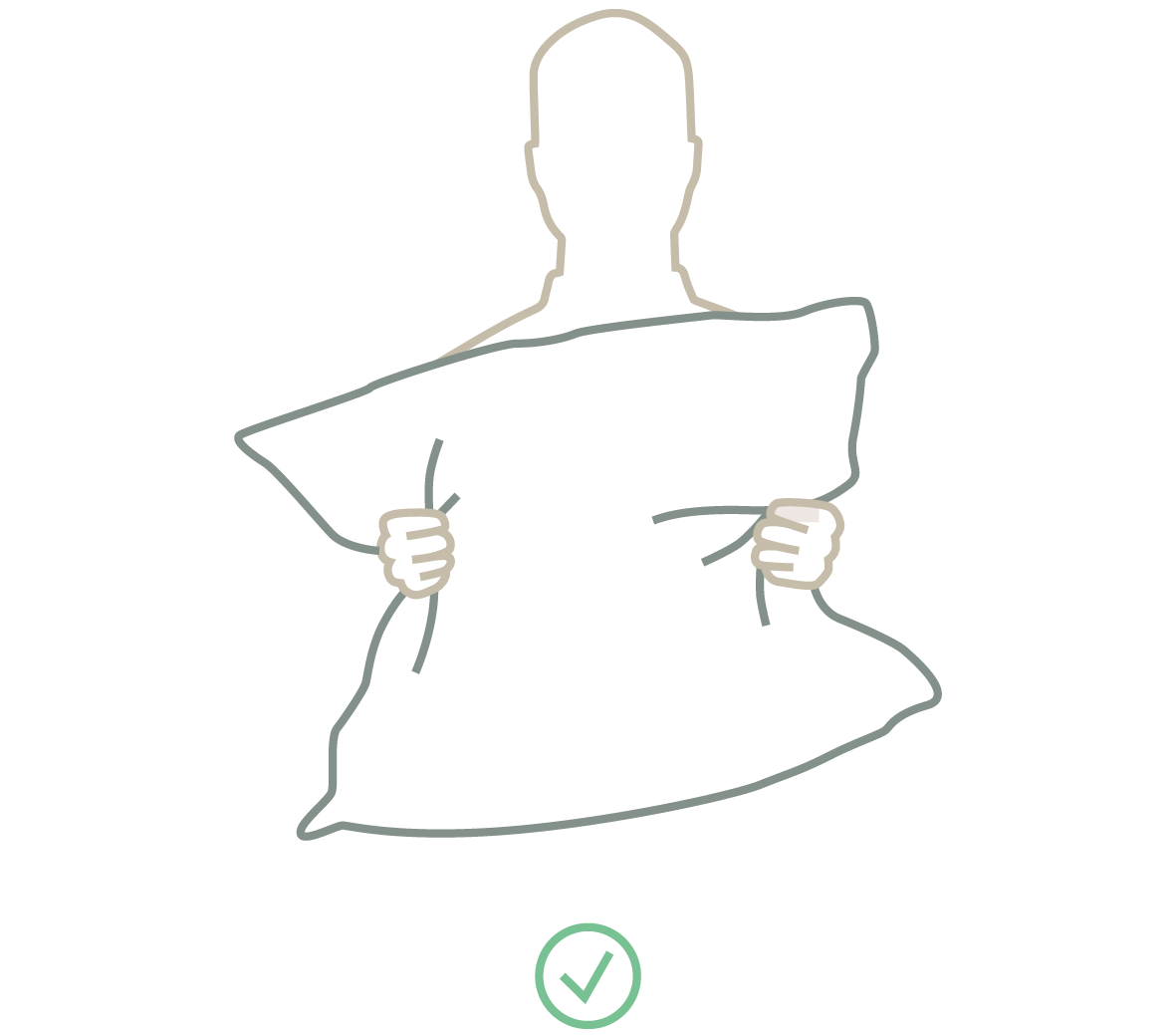
Loosen the down
Shake pillows and duvets briefly every day after use. This makes the down fluffy again and gives it back its fill power.

Loosen the down
Shake pillows and duvets briefly every day after use. This makes the down fluffy again and gives it back its fill power.
Ventilate regularly
Similar to wine, bedding also needs enough time to “breathe” in order to be able to spread out freely. So don’t cover your pillow or duvet immediately after getting up. If possible, it is recommended to air bed linen regularly on the balcony or at the window. How long the bed linen needs to be aired depends on the weather conditions. In summer, when it is a bit warmer in the morning, a good hour is usually enough. At other times of the year, up to two hours is recommended. Please make sure that the bedding is not exposed to rain or high humidity (e.g., fog). Down should not be placed in the blazing sun, otherwise it will become dry and brittle.
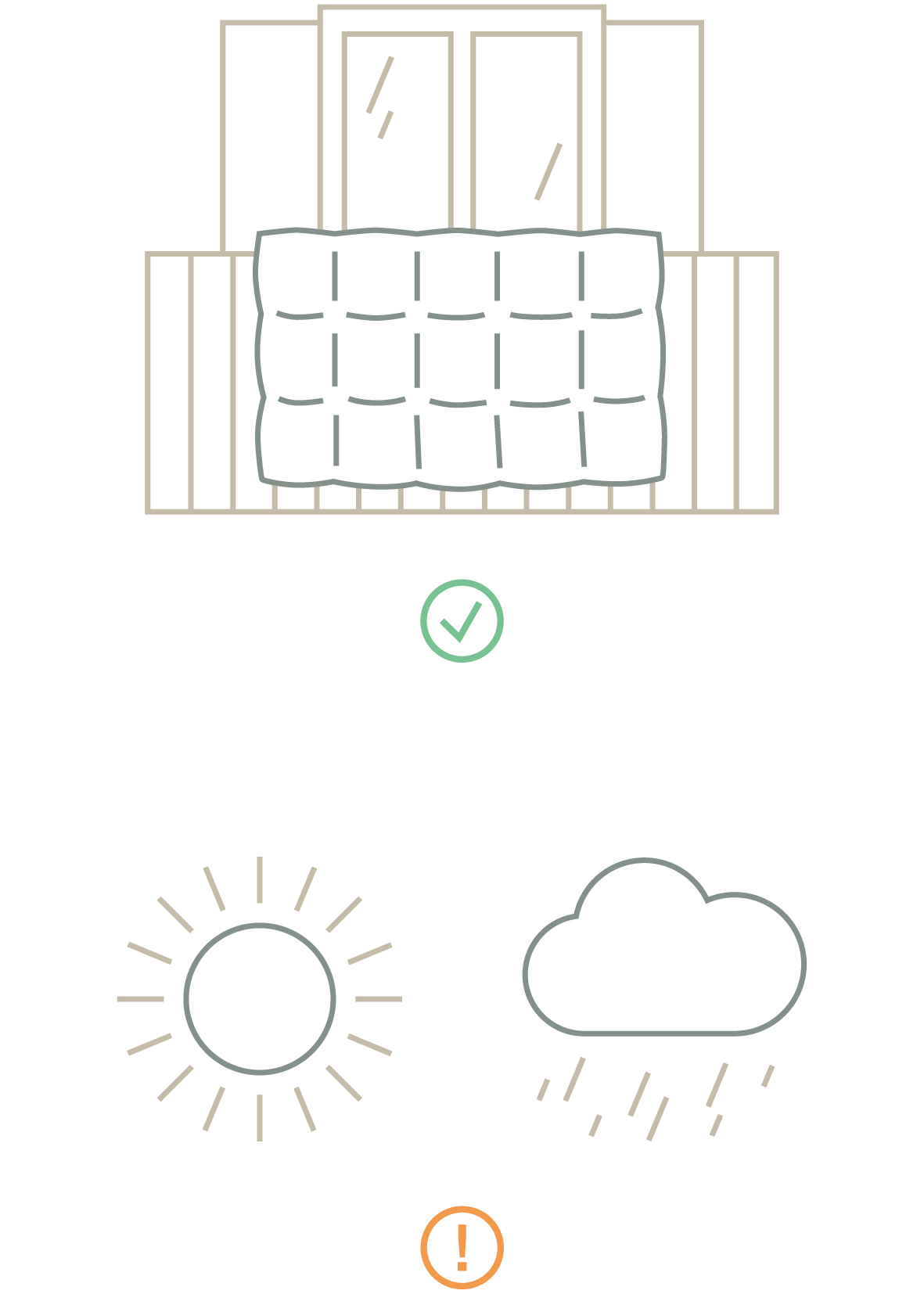

Ventilate regularly
Similar to wine, bedding also needs enough time to “breathe” in order to be able to spread out freely. So don’t cover your pillow or duvet immediately after getting up. If possible, it is recommended to air bed linen regularly on the balcony or at the window. How long the bed linen needs to be aired depends on the weather conditions. In summer, when it is a bit warmer in the morning, a good hour is usually enough. At other times of the year, up to two hours is recommended. Please make sure that the bedding is not exposed to rain or high humidity (e.g., fog). Down should not be placed in the blazing sun, otherwise it will become dry and brittle.
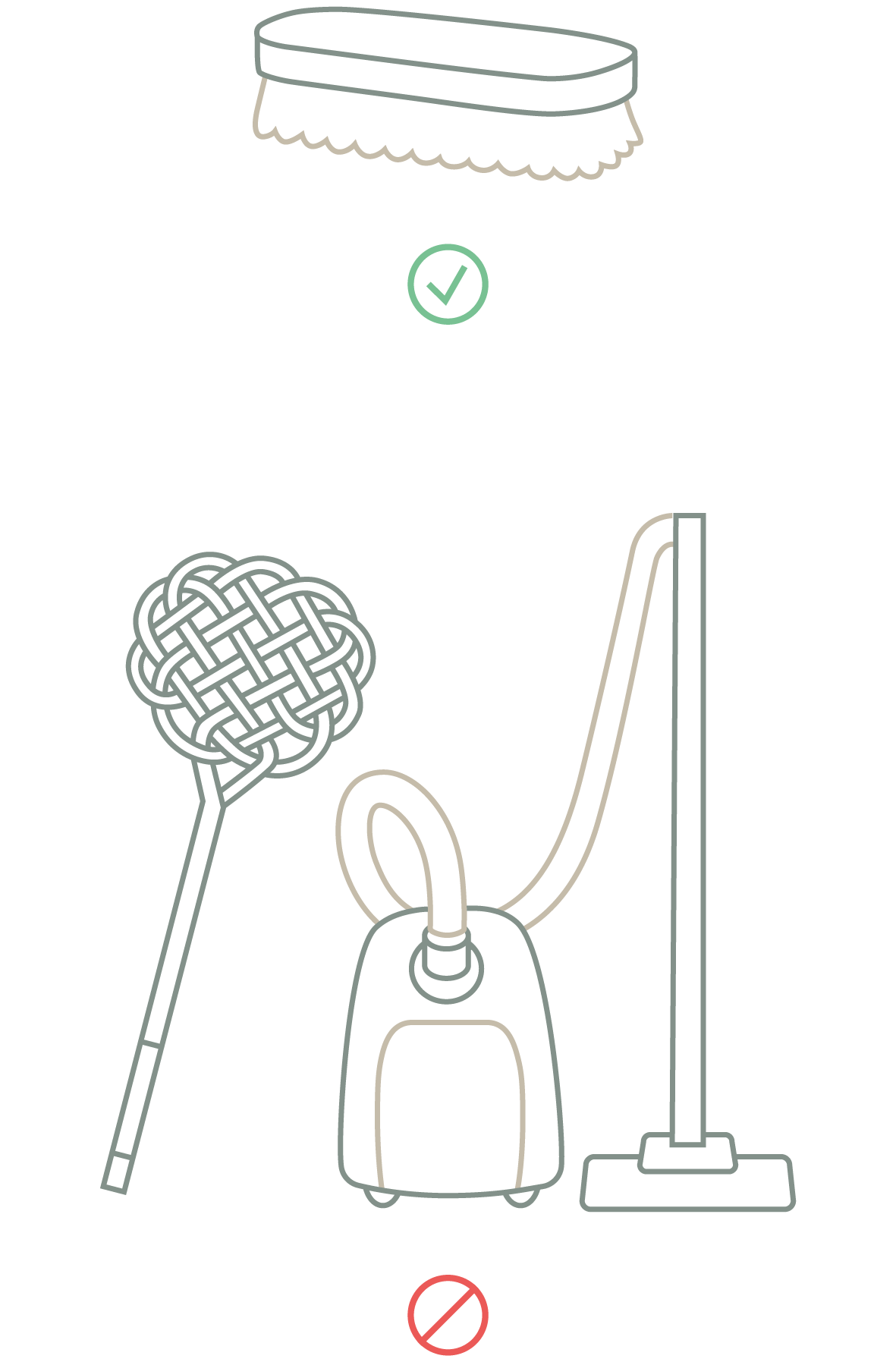
Cleaning
Dust and lint on duvet covers are best removed with a soft brush. Please do not use a vacuum cleaner or carpet beater.

Cleaning
Dust and lint on duvet covers are best removed with a soft brush. Please do not use a vacuum cleaner or carpet beater.
Caring for down jackets
Once a down jacket has been clumped, it cannot be loosened up again – not even by washing or drying it again. For this reason, it is important to observe a few tips in order to care for down jackets optimally: only wash and dry the jacket when it is really necessary. During each wash, the down is stripped of some of its fat layer, which has a negative effect on its fill power. Let your jacket air regularly and make sure it is stored in a clean place. For areas that are susceptible to dirt, such as the collar or the sleeves, it is advisable to clean the soiled spots with lukewarm water and a little added detergent. But here, too, the following applies: afterwards, let it dry well and shake the jacket regularly. This is the only way to ensure that the down stays in shape.
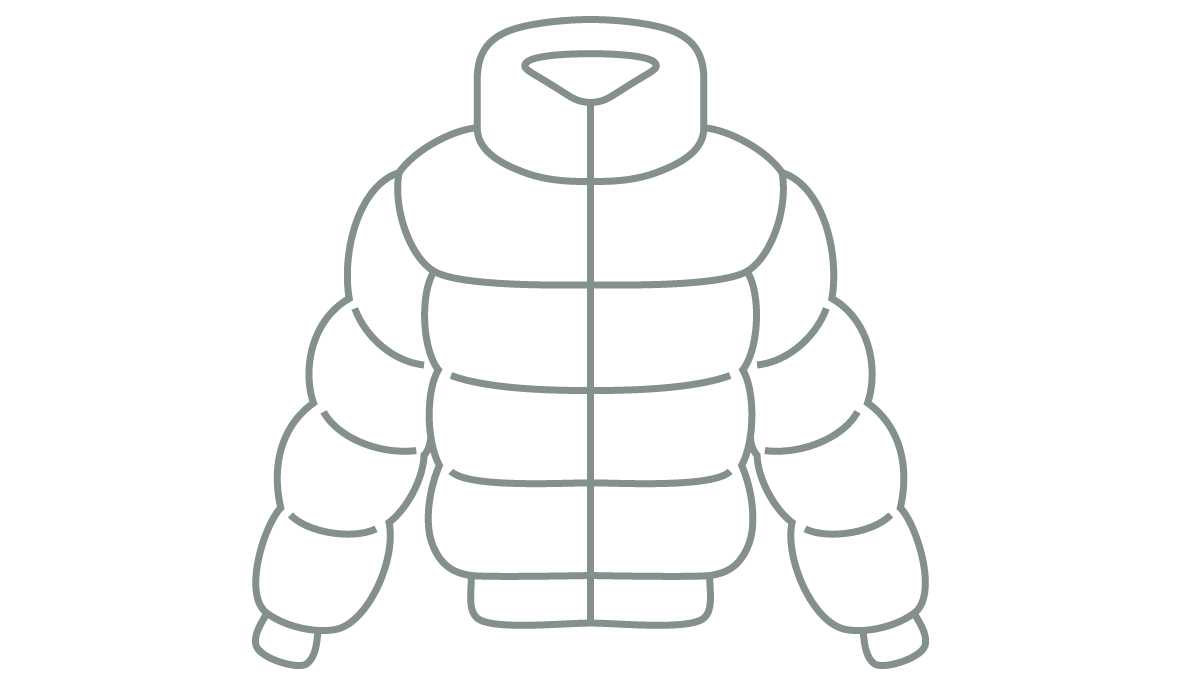

Caring for down jackets
Once a down jacket has been clumped, it cannot be loosened up again – not even by washing or drying it again. For this reason, it is important to observe a few tips in order to care for down jackets optimally: only wash and dry the jacket when it is really necessary. During each wash, the down is stripped of some of its fat layer, which has a negative effect on its fill power. Let your jacket air regularly and make sure it is stored in a clean place. For areas that are susceptible to dirt, such as the collar or the sleeves, it is advisable to clean the soiled spots with lukewarm water and a little added detergent. But here, too, the following applies: afterwards, let it dry well and shake the jacket regularly. This is the only way to ensure that the down stays in shape.
Washing instructions
Introduction
For puff and fluff – to maintain the quality of down products, you should ensure that you wash them properly. In this chapter, you will find out at how many times you can wash your down products and how often you should ideally clean your pillows and duvets.
*Washing down correctly: a PDF with detailed washing instructions awaits you at the end of the chapter, so as to hand over the reins of down cleaning with a clear conscience.
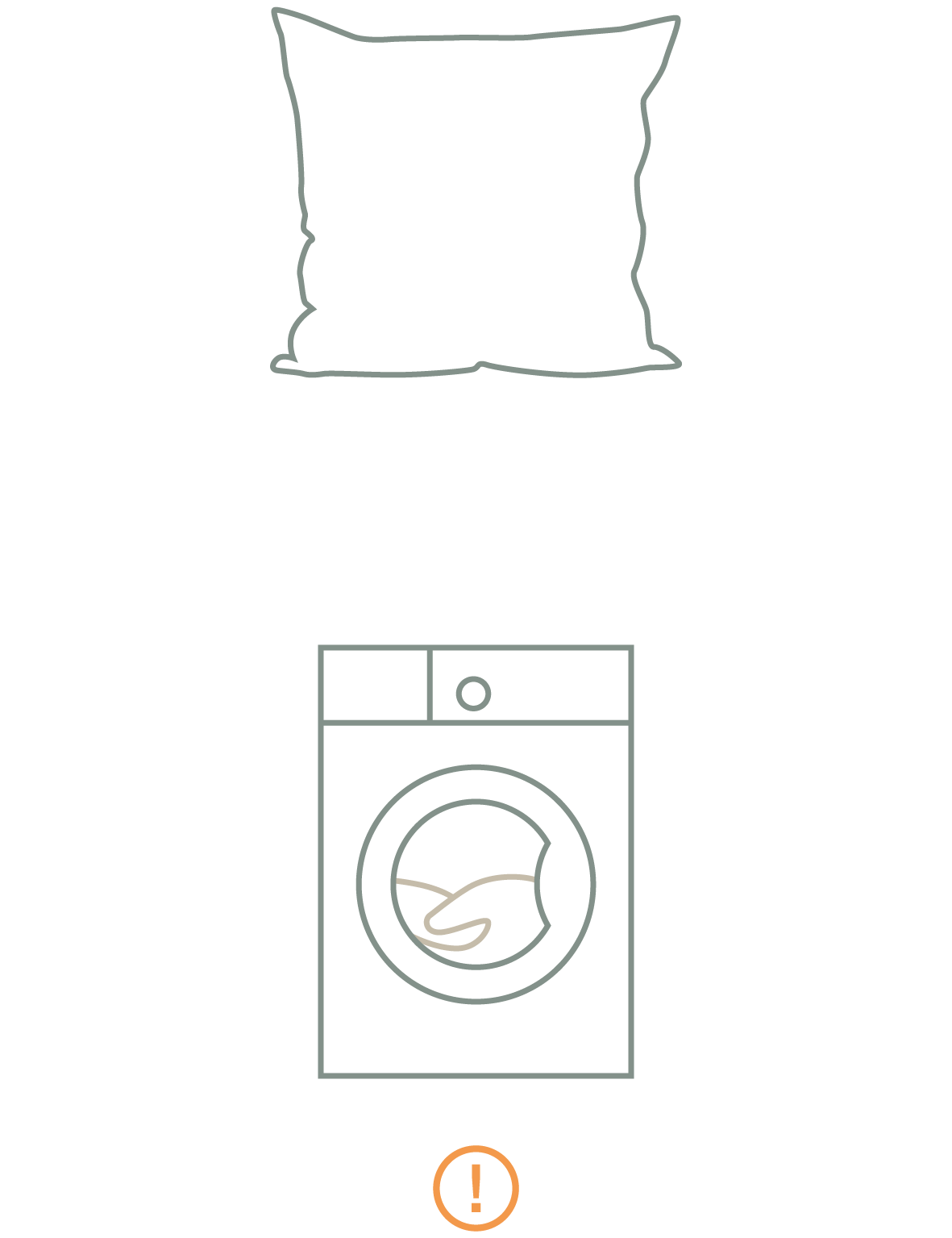
Washing pillows
If looked after carefully, your pillow will last for up to 5 years. Depending on how much it is used, it should find its way into the washing drum 1 to 2 times a year. You can also easily wash your pillow in a normal household washing machine. Unless otherwise noted on the label, a down pillow can withstand a wash programme of up to 60 degrees. To protect the down and feathers, however, a programme with less heat is recommended.
You should also refrain from using a high spin. It is better to spin the pillows for longer at 300–400 rotations rather than once on a short and high setting. You should wash your pillows individually and not add any other textiles to the wash.
If you want to avoid an unpleasant odour from your down pillow, you should bear two things in mind. First, you should decide on a sufficient quality of down and feathers when you make your purchase and, second, you should be fastidious about ensuring that no damp areas remain when drying.

Washing pillows
If looked after carefully, your pillow will last for up to 5 years. Depending on how much it is used, it should find its way into the washing drum 1 to 2 times a year. You can also easily wash your pillow in a normal household washing machine. Unless otherwise noted on the label, a down pillow can withstand a wash programme of up to 60 degrees. To protect the down and feathers, however, a programme with less heat is recommended.
You should also refrain from using a high spin. It is better to spin the pillows for longer at 300–400 rotations rather than once on a short and high setting. You should wash your pillows individually and not add any other textiles to the wash.
If you want to avoid an unpleasant odour from your down pillow, you should bear two things in mind. First, you should decide on a sufficient quality of down and feathers when you make your purchase and, second, you should be fastidious about ensuring that no damp areas remain when drying.
Washing your down duvet
High-quality down duvets can last for up to 10 years with good care and regular ventilation. To ensure that your blanket remains as cosy as it was just after you bought it, ensure that it is professionally cleaned: you can easily wash down duvets in your own washing machine (5 to 7 kg capacity). For oversized duvets, however, it may be advisable to go to a launderette with 12 kg washing machines. For the correct wash programme setting, take a look at the label. A wash at 60 degrees is recommended. How often you should clean your down duvet depends on how much it is used. At least every 3 years is advisable.
Duvets made of other materials such as polyester, microfibres or cotton should not be washed at more than 60 degrees, and silk duvets at no more than 30 degrees. You can wash natural hair duvets at 30 degrees, but it is advisable to refrain from doing so. They become matted quickly and have the ability to clean themselves. So whether they are cashmere, camel hair or virgin wool duvets, it is better to ventilate your natural hair duvets regularly to prevent unpleasant odours or germs.
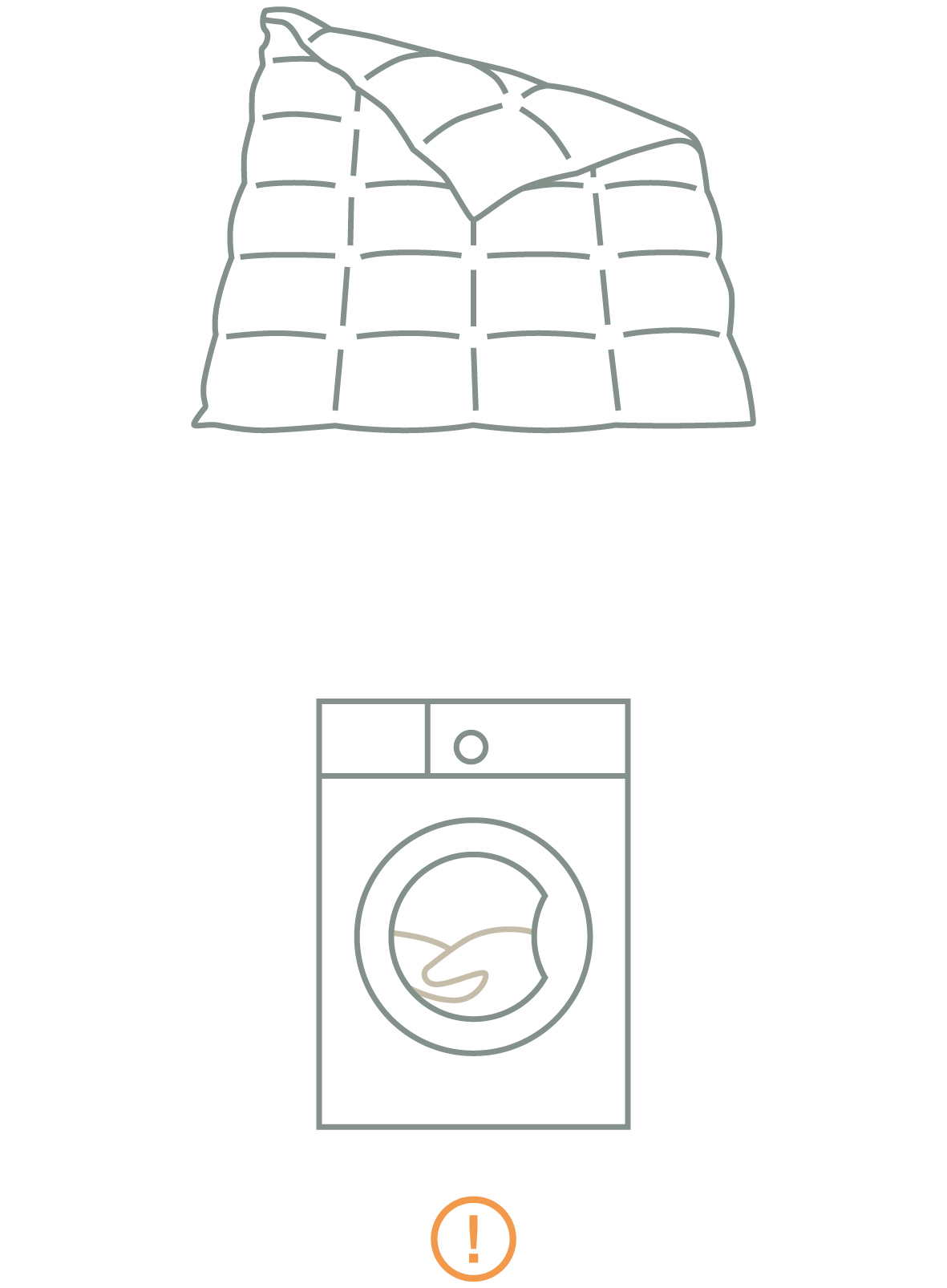

Washing your down duvet
High-quality down duvets can last for up to 10 years with good care and regular ventilation. To ensure that your blanket remains as cosy as it was just after you bought it, ensure that it is professionally cleaned: you can easily wash down duvets in your own washing machine (5 to 7 kg capacity). For oversized duvets, however, it may be advisable to go to a launderette with 12 kg washing machines. For the correct wash programme setting, take a look at the label. A wash at 60 degrees is recommended. How often you should clean your down duvet depends on how much it is used. At least every 3 years is advisable.
Duvets made of other materials such as polyester, microfibres or cotton should not be washed at more than 60 degrees, and silk duvets at no more than 30 degrees. You can wash natural hair duvets at 30 degrees, but it is advisable to refrain from doing so. They become matted quickly and have the ability to clean themselves. So whether they are cashmere, camel hair or virgin wool duvets, it is better to ventilate your natural hair duvets regularly to prevent unpleasant odours or germs.
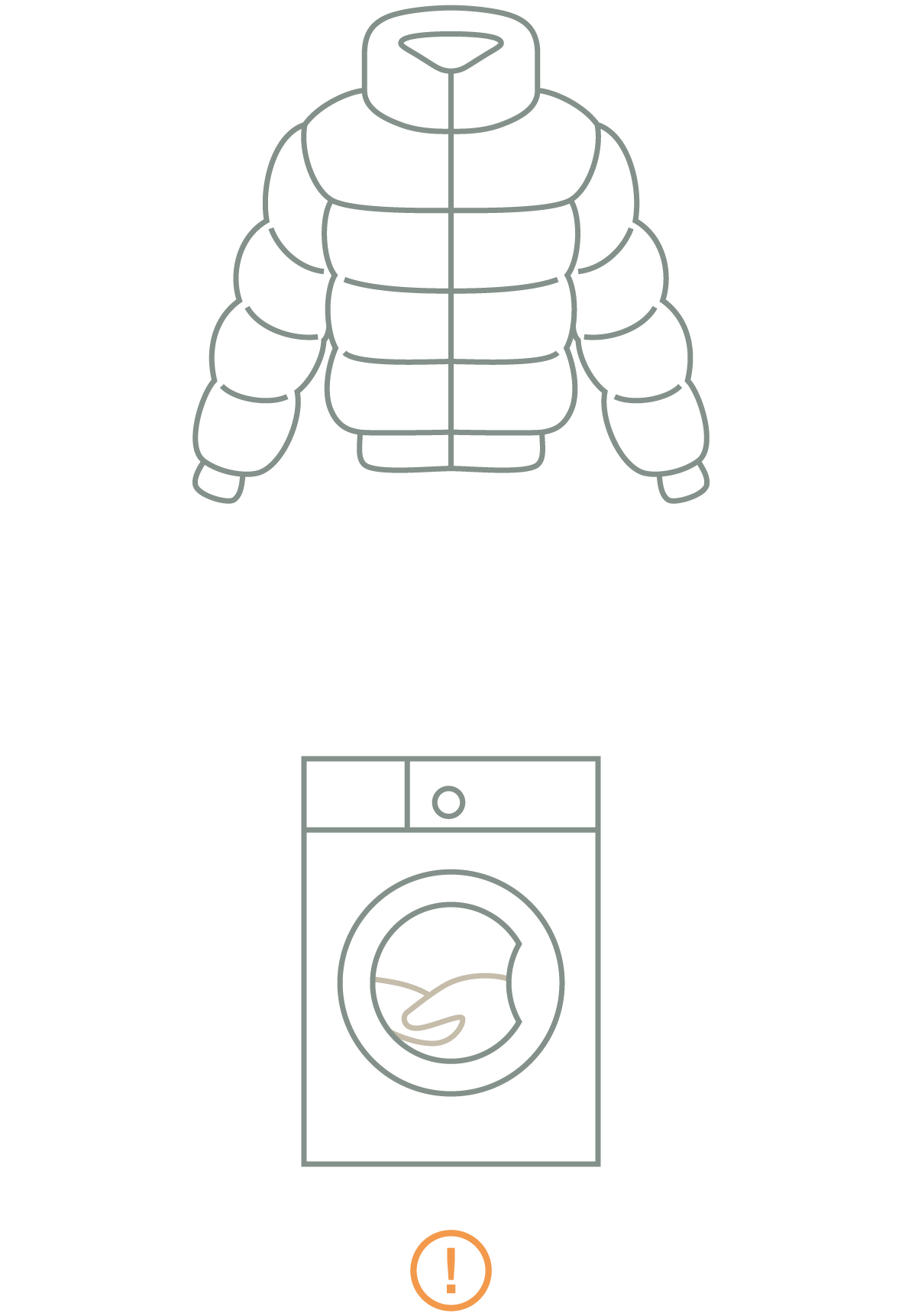
Washing down jackets
To get stained down jackets clean again, you can wash them yourself in your home washing machine. Unlike with pillows and down duvets, however, you should choose a wash programme for the down jacket that does not get hotter than 30 degrees. You should also not spin the down jacket. Set a speed of over 800 rotations, if only to spin briefly in a time frame of 10–20 seconds – less is always gentler.
As with all textiles, you should check that there is nothing left in the pockets of the down jacket before washing. Close all zips, Velcro fasteners and press-studs, and turn the jacket inside out. To remove grease stains or other stubborn dirt, you can pretreat the jacket with either liquid gall soap or a mixture of warm water and a little down detergent. Simply rub in briefly and let it take effect. The washing machine should hold at least 6 kg, and the down jacket should be able to spread out easily in the drum. To impregnate the down jacket, use a special liquid impregnator for down jackets. Once the washing process has ended, carefully remove the down jacket from the washing machine in a horizontal position. If the jacket is flat, don’t worry. After a short shake and a few laps in the dryer, it should regain its fill power.

Washing down jackets
To get stained down jackets clean again, you can wash them yourself in your home washing machine. Unlike with pillows and down duvets, however, you should choose a wash programme for the down jacket that does not get hotter than 30 degrees. You should also not spin the down jacket. Set a speed of over 800 rotations, if only to spin briefly in a time frame of 10–20 seconds – less is always gentler.
As with all textiles, you should check that there is nothing left in the pockets of the down jacket before washing. Close all zips, Velcro fasteners and press-studs, and turn the jacket inside out. To remove grease stains or other stubborn dirt, you can pretreat the jacket with either liquid gall soap or a mixture of warm water and a little down detergent. Simply rub in briefly and let it take effect. The washing machine should hold at least 6 kg, and the down jacket should be able to spread out easily in the drum. To impregnate the down jacket, use a special liquid impregnator for down jackets. Once the washing process has ended, carefully remove the down jacket from the washing machine in a horizontal position. If the jacket is flat, don’t worry. After a short shake and a few laps in the dryer, it should regain its fill power.
General information
Always check your down products for openings before washing. If small cracks have formed, they can come apart during washing and not only thereby render the down product unusable. If you find a place with such an opening, it is often enough to sew it up.
For all washing processes that have to do with down or feathers, use a special down detergent such as Aqua Clean by Otto Keller, or at least one mild detergent. Also, do not use fabric softener under any circumstances, as this causes the down to stick together. When setting the washing temperature, pay attention to the care label (40 or 60 degrees for down bedding, 30 degrees for down jackets) and generally refrain from high spin rates. Always dry your down laundry thoroughly after washing. In the next chapter, you will learn how to best proceed when drying.
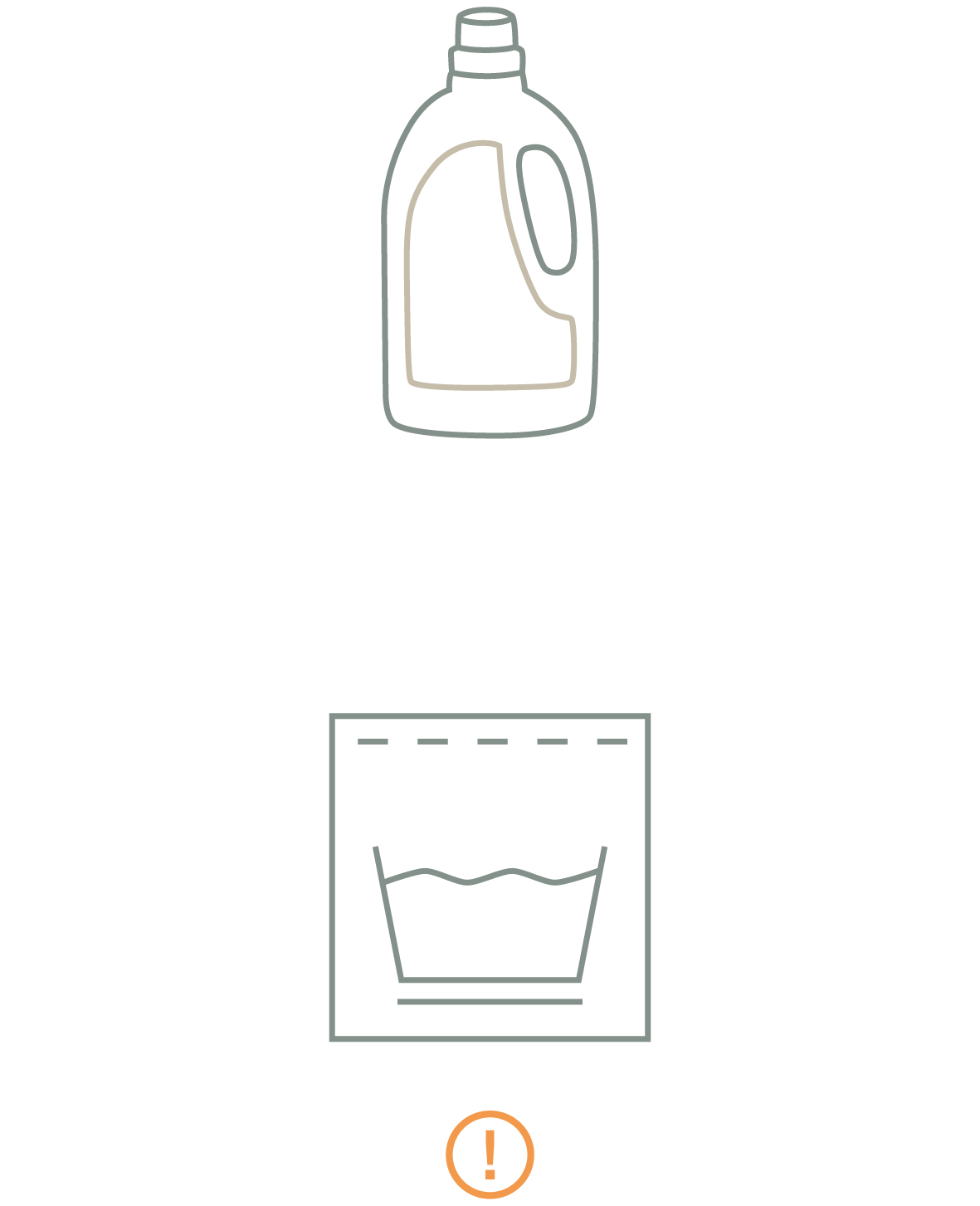

General information
Always check your down products for openings before washing. If small cracks have formed, they can come apart during washing and not only thereby render the down product unusable. If you find a place with such an opening, it is often enough to sew it up.
For all washing processes that have to do with down or feathers, use a special down detergent such as Aqua Clean by Otto Keller, or at least one mild detergent. Also, do not use fabric softener under any circumstances, as this causes the down to stick together. When setting the washing temperature, pay attention to the care label (40 or 60 degrees for down bedding, 30 degrees for down jackets) and generally refrain from high spin rates. Always dry your down laundry thoroughly after washing. In the next chapter, you will learn how to best proceed when drying.
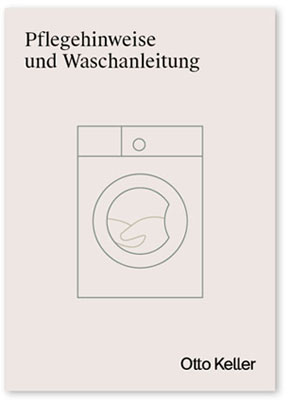
Die Pflegeanleitung als
PDF-Dokument.

Die Pflegeanleitung als
PDF-Dokument.

Having down products cleaned
You can also have your down products treated at a dry cleaner. But to avoid nasty surprises, when choosing a dry cleaner, make sure that they specialise in processing high-quality down products. The costs for cleaning large duvets, for example, are on average 40 to 60 euros; for smaller duvets (135 × 200), they are between 30 and 50 euros.
In the case of high-quality duvets, pillows or jackets made from eiderdown, a special procedure is normally required for cleaning: the fine eiderdown must be separated from the cover, cleaned separately and then placed in a new cover. Our specialist staff will be happy to advise you on this.
Drying
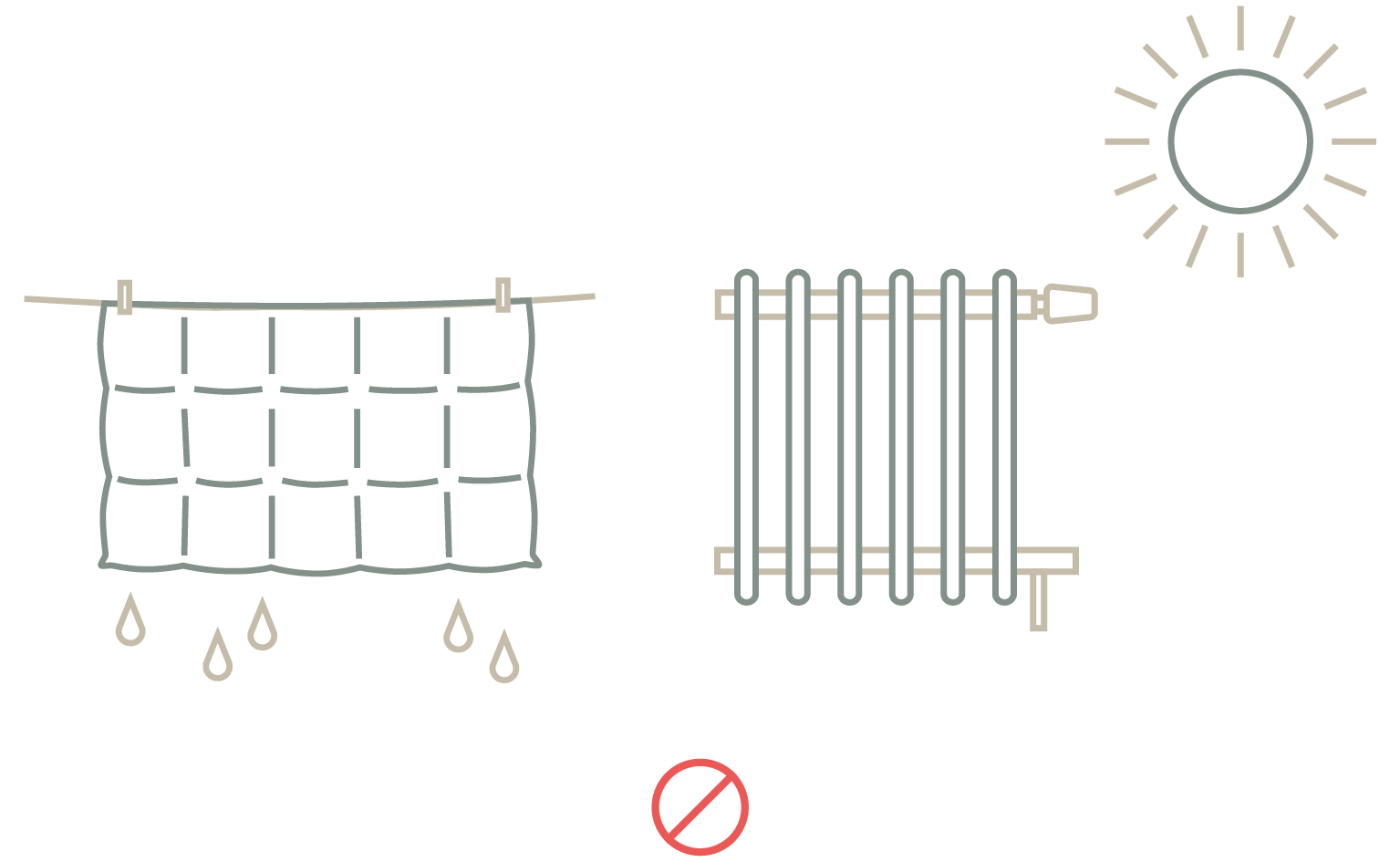
Dry down thoroughly and completely
Whether pillows, down duvets or down jackets, your down products should always be dried immediately after washing. Do not hang your down product on or over the heater; use a tumble dryer and set it to the highest level (up to 120 degrees). This is the only way to maintain quality in the long term.
During all drying processes, it is essential to ensure that the down is completely dry, otherwise there is a risk of unpleasant smells or the down becoming clumped. To make sure there’s no more damp down: after the first cycle, get the load out of the dryer, shake it up by hand, and let it cool down. If you then still find damp spots, repeat the drying process until everything feels completely dry. If newer dryers switch off too early, the sensors can be tricked by adding in a damp towel.
When drying your down products in the tumble dryer, it is advantageous to use a drum with a large capacity. Because the more space the down has, the easier it is for it to spread out again. For a good fluffy feeling even after cleaning, add three to four dryer balls to the drying process, or try some clean, colourless tennis balls. The circulation of the balls can help the down to loosen up more easily and thus regain its fullness.

Dry down thoroughly and completely
Whether pillows, down duvets or down jackets, your down products should always be dried immediately after washing. Do not hang your down product on or over the heater; use a tumble dryer and set it to the highest level (up to 120 degrees). This is the only way to maintain quality in the long term.
During all drying processes, it is essential to ensure that the down is completely dry, otherwise there is a risk of unpleasant smells or the down becoming clumped. To make sure there’s no more damp down: after the first cycle, get the load out of the dryer, shake it up by hand, and let it cool down. If you then still find damp spots, repeat the drying process until everything feels completely dry. If newer dryers switch off too early, the sensors can be tricked by adding in a damp towel.
When drying your down products in the tumble dryer, it is advantageous to use a drum with a large capacity. Because the more space the down has, the easier it is for it to spread out again. For a good fluffy feeling even after cleaning, add three to four dryer balls to the drying process, or try some clean, colourless tennis balls. The circulation of the balls can help the down to loosen up more easily and thus regain its fullness.
If the filling still feels damp and lumpy after the first drying cycle, you should definitely put it through another. If the dryer switches off too early, the sensors can be tricked by adding in a damp towel.
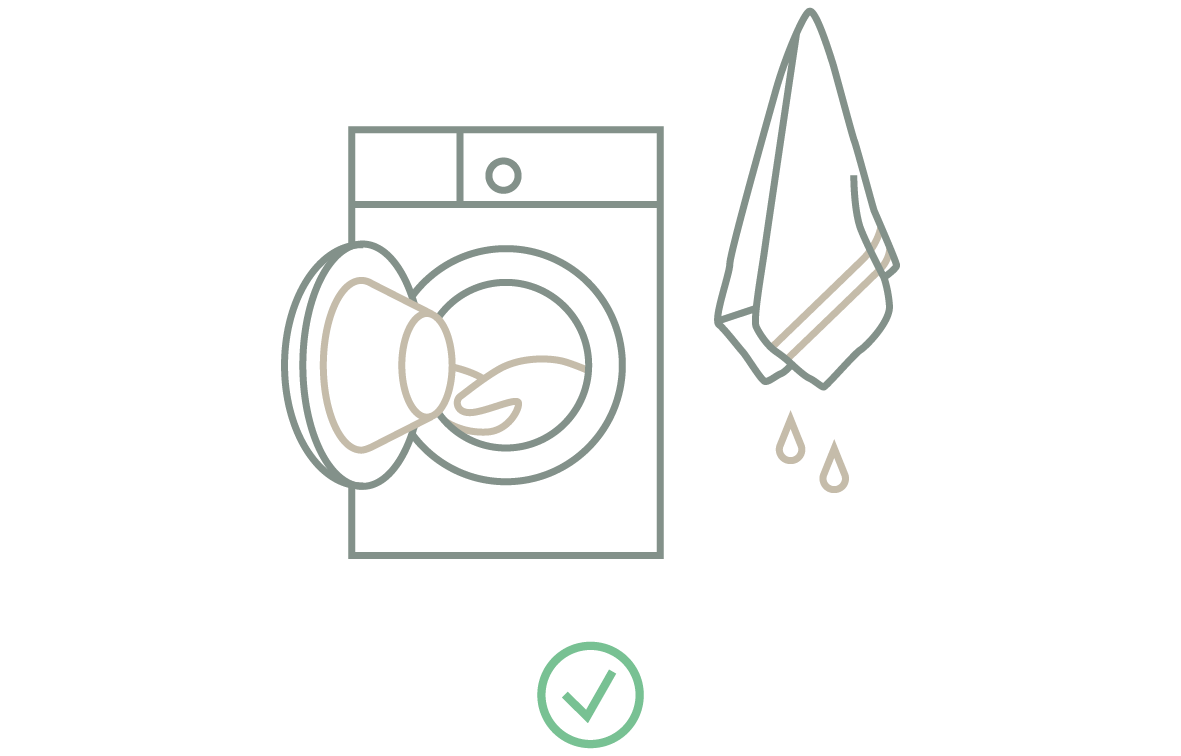

If the filling still feels damp and lumpy after the first drying cycle, you should definitely put it through another. If the dryer switches off too early, the sensors can be tricked by adding in a damp towel.

Drying your down jacket
To dry your down jacket completely and to get the best puffy, fluffy result, hang it freely in the air for 24 hours after the drying process and knead it well again and again.

Drying your down jacket
To dry your down jacket completely and to get the best puffy, fluffy result, hang it freely in the air for 24 hours after the drying process and knead it well again and again.
Down laundry without a dryer
Washing down pillows, down jackets or down products in general without a dryer is generally not recommended. The drying processes without a dryer can be very tedious or complicated, and you run the risk of the down permanently clumping together. If there is residual moisture in the down, mould can even develop, or unhealthy germs form. So it’s best to go to a launderette to dry your down products properly. If the label says that your down product is not suitable for tumble drying, you should ideally seek professional bed linen cleaning.
Detergents for down
Detergents for down
We have developed the down detergent Aqua Clean by Otto Keller and the synthetic detergent Aqua Syn by Otto Keller to promote long-term comfort and deep-down cleanliness, and to protect nature. The cleaning power of the detergents is based 100% on sustainable surfactants made from wheat, corn and potato starch. They are not subject to mandatory labelling requirements, are phosphate-free, pH-neutral and ecologically harmless, and do not require optical brighteners. With this natural care power, environmentally friendly washing becomes light as a feather – and you can sleep in peace.
- Free from optical brighteners
- Phosphate-free
- pH-neutral
- Ecologically safe
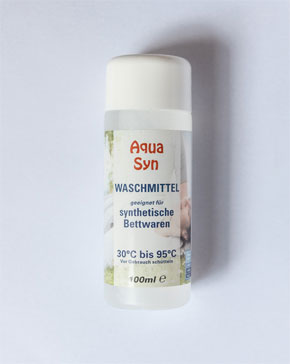
Produkt
Aqua Syn
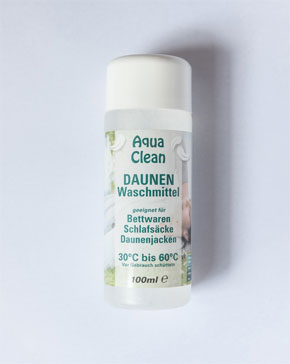
Produkt
Aqua Clean

Produkt
Aqua Syn

Produkt
Aqua Clean

Contact Person
You can reach us easily by phone from Mon-Fri 8:00 am to 4:30 pm. We are happy to answer your questions.
T +49 (0) 2505 9337-0
F +49 (0) 2505 9337-77
M info@otto-keller.de